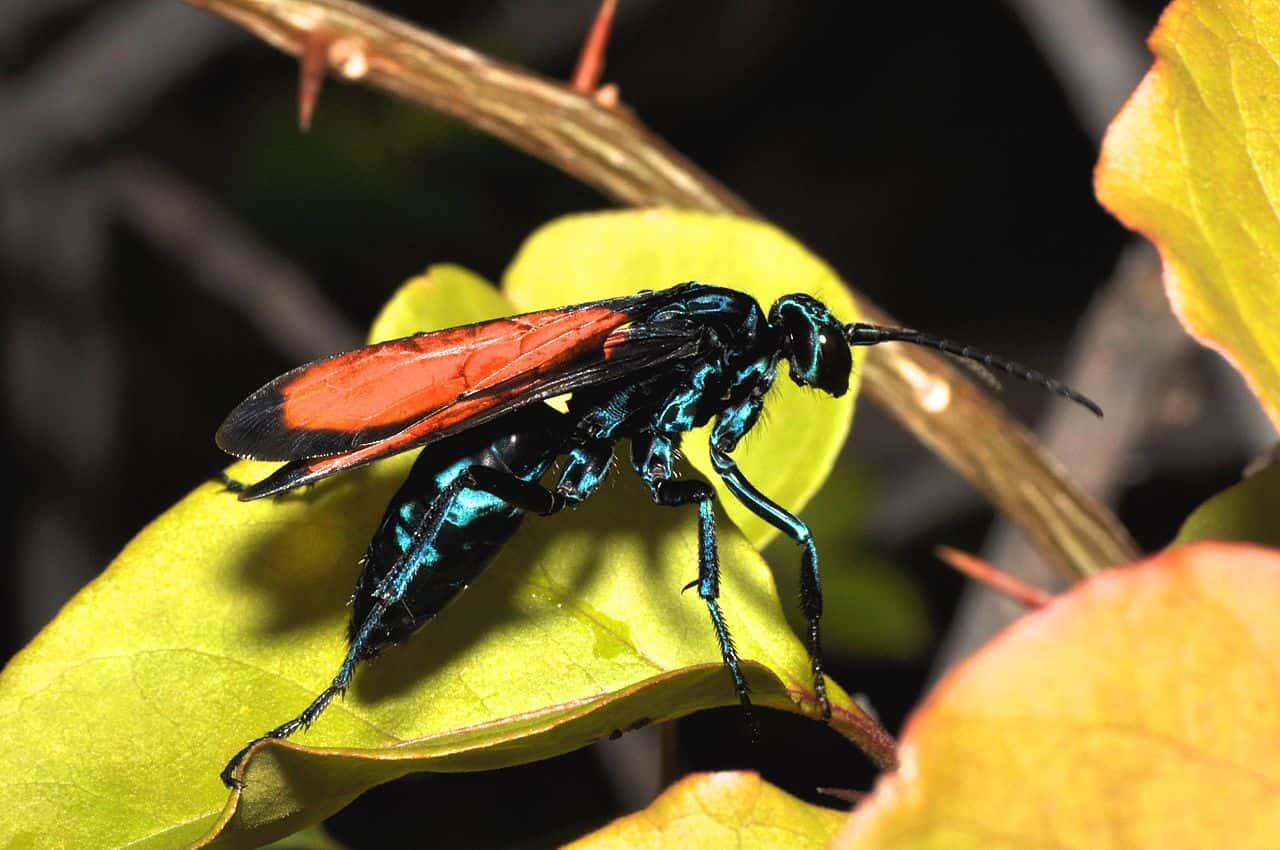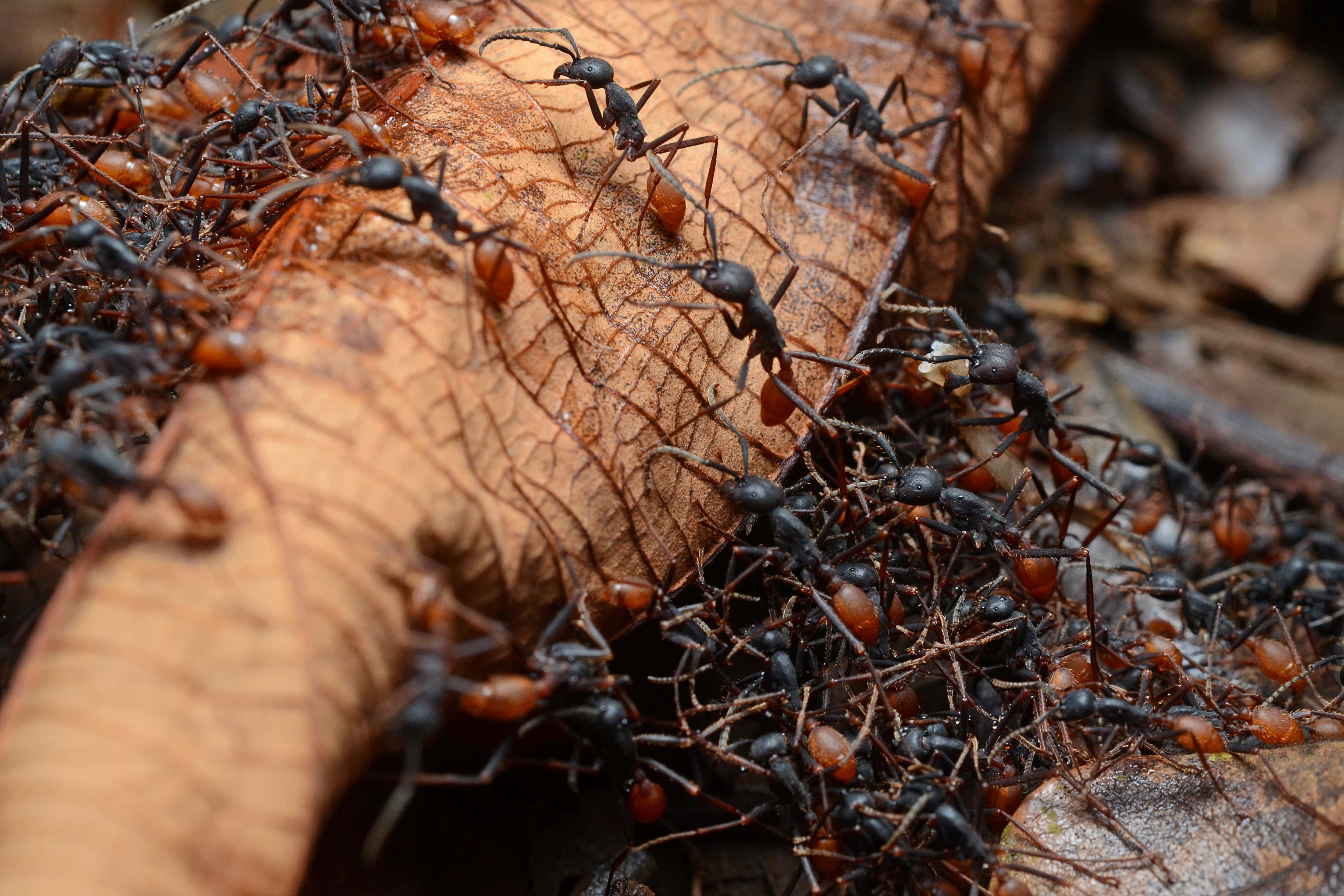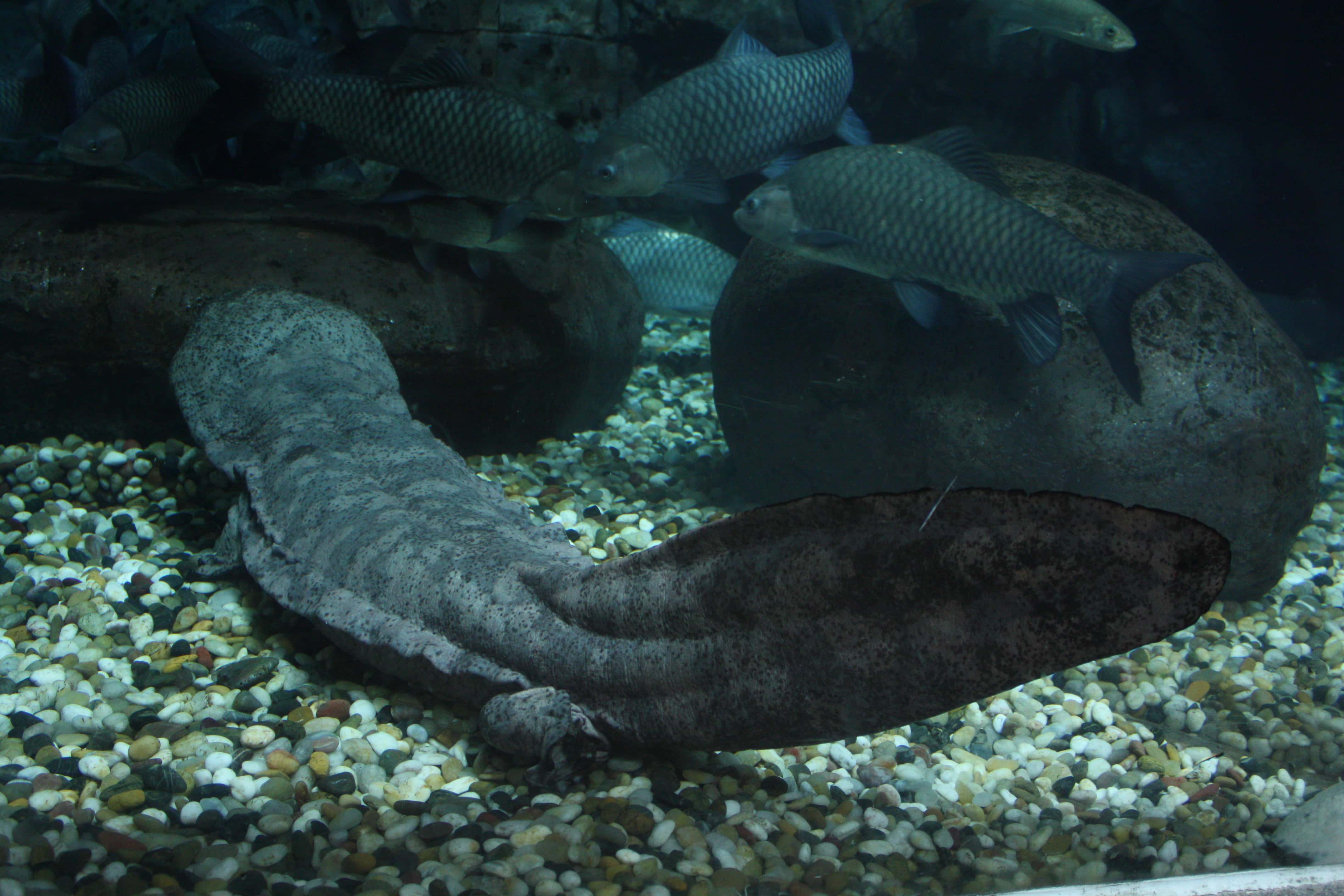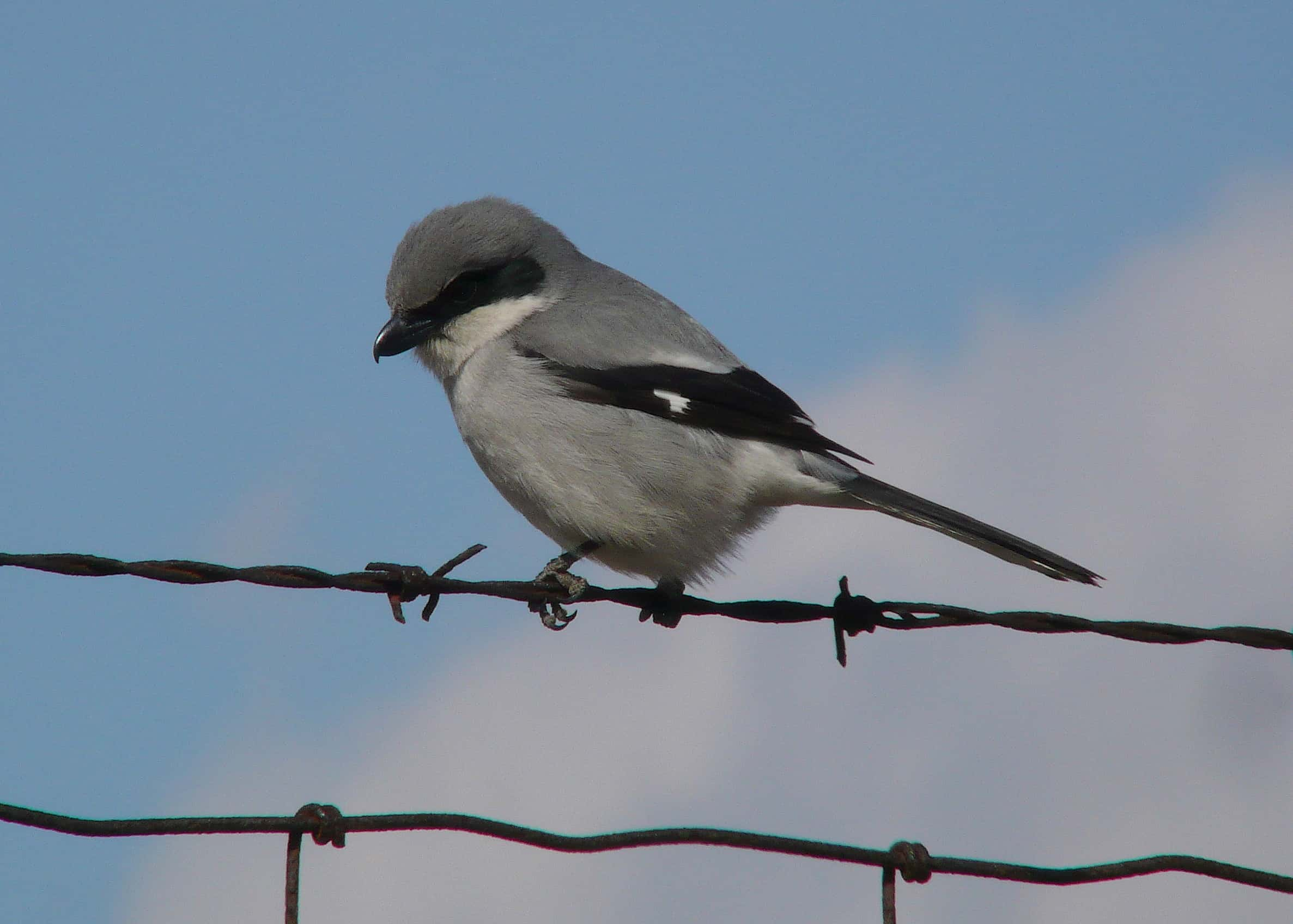“Nature is a haunted house” —Emily Dickinson
There are some pretty crazy things out there in the natural world. Some animals have amazing abilities, some of which are downright scary. Here’s a list of 25 real-world creatures that actually exist in nature today.
1. Dragon Lizards (Draco volans)
The Draco Lizard, also known as the Flying Dragon, has specially adapted ribs that fold out to form wings. It can’t actually fly, but it can glide more than 100 feet from one tree to another, never having to go to the ground.

2. Snakes that Fly Through the Air (Chrysopelea)
Flying or Gliding Snakes live in South and Southeast Asia. They can flatten themselves out to twice their usual width in the air, and while they too can’t technically fly, they can still glide hundreds of feet. Maybe weirder? Scientists don't know how exactly they accomplish this feat.
3. A Wasp That Eats Tarantulas (Pepsis)
The Tarantula Hawk isn’t actually a bird, it’s a wasp that preys on, of all things, giant tarantulas. The wasp paralyzes the spiders with a venomous sting, then lays an egg on its body. When the egg hatches, the larva burrows in and devours the giant spider while its still alive. On top of all that, the Tarantula Hawk’s sting is one of the most painful in the world.
 Wikimedia Commons, Pavel Kirillov
Wikimedia Commons, Pavel Kirillov
4. Real Sea Monster (Mesonychoteuthis hamiltoni)
Most people have heard of the Giant Squid, but it’s not even the biggest squid out there. The Colossal Squid takes that prize; very little is known about this deep water horror that rarely comes to the surface, but we do know that it can grow up to 45 feet long.
5. The Eel with the Big Mouth (Eurypharynx pelecanoides)
The Gulper Eel, another frightening creature from the ocean deeps, is as bizarre as it is terrifying. Its mouth is far larger than its body, allowing it to swallow prey even larger than itself.
6. The Stuff of Nightmares (Amblypygi)
You might recognize these arachnids from Harry Potter and the Goblet of Fire, but did you know they were real? Related to both spiders and scorpions, Whip Spiders (also known as Whip Scorpions) have eight long, whip-like legs and a set of large, menacing pincers.
 Wikimedia Commons, Graham Wise
Wikimedia Commons, Graham Wise
7. A 15-Foot Crab (Macrocheira kaempferi)
The body of the Japanese Spider Crab might only be 15 inches in diameter, but its legs are another story. They can span up to 15 feet! That’s enough to make it the world’s largest crustacean.
8. Dracula Deer (Moschus leucogaster)
The Himalayan Musk Deer doesn’t actually suck blood like Dracula, but it does possess an impressive set of fang-like tusks that can grow up to 10 centimeters long.
9. A Bird Eating Spider (Theraphosa blondii)
The Goliath Birdeater is the world’s largest spider. This tarantula can be as much as 11 inches across—as big as a dinner plate! They eat birds, frogs, lizards and large insects, and, believe it or not, they are relatively harmless to humans.

Sign up to our newsletter.
History’s most fascinating stories and darkest secrets, delivered to your inbox daily. Making distraction rewarding since 2017.
10. One Big Snake (Eunectes murinus)
There are a few species of boa constrictor that could be considered monsters, but the Green Anaconda has to take the cake. It can grow up to 30 feet long and can weigh over 500 pounds!
11. A Two-Meter-Long Salamander (Andrias davidianus)
The is the world’s largest amphibian. It lives in rivers and streams throughout China, and it grows to be up to 1.8 meters long.
12. Monster…Crickets? (Deinacrida)
You might not think that crickets are very scary, but think again! The Giant Weta, an insect related to crickets, is one of the world’s heaviest insects. Its covered in thick armor, and its so heavy that it can’t actually jump.
 Wikimedia Commons, jokertrekker
Wikimedia Commons, jokertrekker
13. Modern Day Dinosaur (Crocodylus porosus)
Crocodilians are ancient reptiles that are more closely related to dinosaurs than they are to lizards. The largest species living today is the Saltwater Crocodile, and it can commonly grow up to 23 feet long and weigh 2,200 pounds. To make things even worse, it’s considered by many to be the animal that is most likely to eat a human.
 Wikimedia Commons, fvanrenterghem
Wikimedia Commons, fvanrenterghem
14. A Vulture That Only Eats Bones (Gypaetus barbatus)
The Bearded Vulture, also known as the Lammergeier, is a large bird of prey that lives in the Alps. Like most vultures, it’s a scavenger, and feeds on the carcasses of passed animals. But the Lammergeier is the only bird whose diet is almost exclusively (70-90%) bones. Its stomach acid is even stronger than battery acid, and it can digest bones in less than a day.
15. River Monster (Pangasianodon gigas)
One of the world’s largest freshwater fish, the Mekong Giant Catfish can reach lengths of more than 10 feet long, and can weigh more than 650 pounds. They look scary, but they’re really gentle giants who feed exclusively on plants and algae at the bottom of rivers in Southeast Asia.
16. Gigantic Bat (Acerodon jubatus)
Bats, like most flying animals, tend to be small. Not the Giant Golden-Crowned Flying Fox from the Philippines: It can have a wingspan of five feet across and weigh up to 2.5 pounds, making it the biggest bat in the world. Fortunately, it eats fruit, not blood.
17. Living Buildings (Eciton burchellii)
There are many kinds of army ants, and some kinds are truly horrifying. The colonies of the Eciton burchellii can have up to 2 million individuals, and they’re constantly on the move. Because they eat so much, they can’t stay in one place long. So instead of building permanent nests, they form nests called “bivouacs” where hundreds of thousands of ants link together to form a massive, living structure.
 Wikimedia Commons, Geoff Gallice
Wikimedia Commons, Geoff Gallice
18. The World’s Most Painful Sting (Paraponera clavata)
The Bu*let Ant is said to have the single most painful sting of any creature on earth. The feeling of being bitten by one has been described as “waves of burning, throbbing, all-consuming pain that continues unabated for up to 24 hours". It got its name because people said its sting felt like being shot.
19. The Zombie Fungus (Cordyceps)
The Cordyceps fungus is something straight out of science fiction. Each species of Cordyceps parasitizes a single type of insect, infecting their brain, changing their behavior, and eventually ending the host and growing out of their carcass.
20. Killer Bees (Vespa mandarinia)
Regular old yellowjackets are frightening enough, but they can’t hold a candle to the Asian Giant Hornet. It is the world’s largest wasp, growing between 2.7 and 4.5 centimeters long. A single giant hornet is said to be able to tear apart 40 honeybees in a single minute.
 Wikimedia Commons, Thomas Brown
Wikimedia Commons, Thomas Brown
21. Anglerfish (Lophiiformes)
Very few creatures look as monstrous as the Anglerfish. These horrifying, giant-toothed fish have a luminescent lure that hangs in front of their gaping mouth. Small fish and crustaceans are attracted to the light in the pitch blackness of the deep ocean, but as soon as they get too close the Anglerfish snaps its frightening jaws shut around them.
22. Nice Birdy? (Laniidae)
Shrikes, or Butcherbirds, look very similar to many of the harmless songbirds that we know and love. But Shrikes have a dark secret: Unlike all other songbirds, Shrikes are carnivorous. They hunt small mammals, reptiles and amphibians by picking them up and impaling them on spines or thorns, leaving their prey to be gone before eating their carcass.
23. The Turtle From Underground (Chelus fimbriata)
The Mata Mata is a freshwater turtle that lives in the Amazon rainforest. Its irregular shape is meant to camouflage it in the rivers where it hunts. As soon as a fish gets too close, the Mata Mata sucks the fish into its gaping mouth, swallowing it whole.
 Wikimedia Commons, J. Patrick Fischer
Wikimedia Commons, J. Patrick Fischer
24. Cookie Cutter Shark (Isistius brasiliensis)
Everyone knows the great white shark, but the lesser known cookie cutter shark is somehow more terrifying. This small shark has a strange, round mouth filled with even stranger teeth, and it feeds by carving a cookie-shaped circle of flesh into its prey. Its teeth act like a can-opener, and they leave distinctive round wounds on their victims.
25. Oh, Australia (Bullockornis planei)
People today constantly claim that "everything in Australia is trying to hurt you," but they don't know it was even worse 15 million years ago, when there was a creature called the "Demon-Duck of Doom" that could actually grow to a whopping 250kg (550 pounds), twice the size of an ostrich. These flightless birds were likely related to modern-day geese and ducks.
It's not clear to what degree they were carnivores, but here at Factinate, we've decided that if we ever figure out time travel and pop back a millions of years... we're going to stay away from these guys.
Sources: 1, 2, 3, 4, 5, 6, 7, 8, 9, 10, 11, 12, 13, 14, 15, 16, 17, 18, 19, 20, 21, 22, 23, 24, 25, 26, 27, 28


























